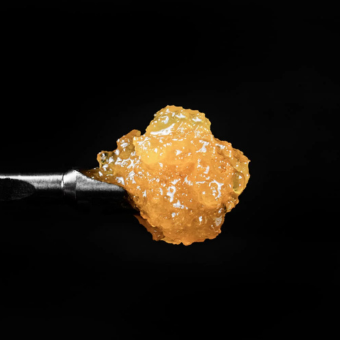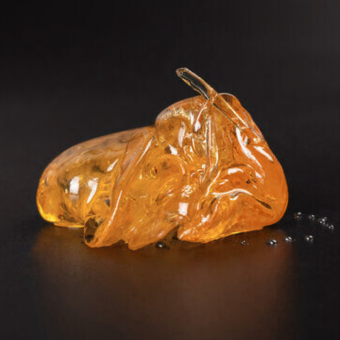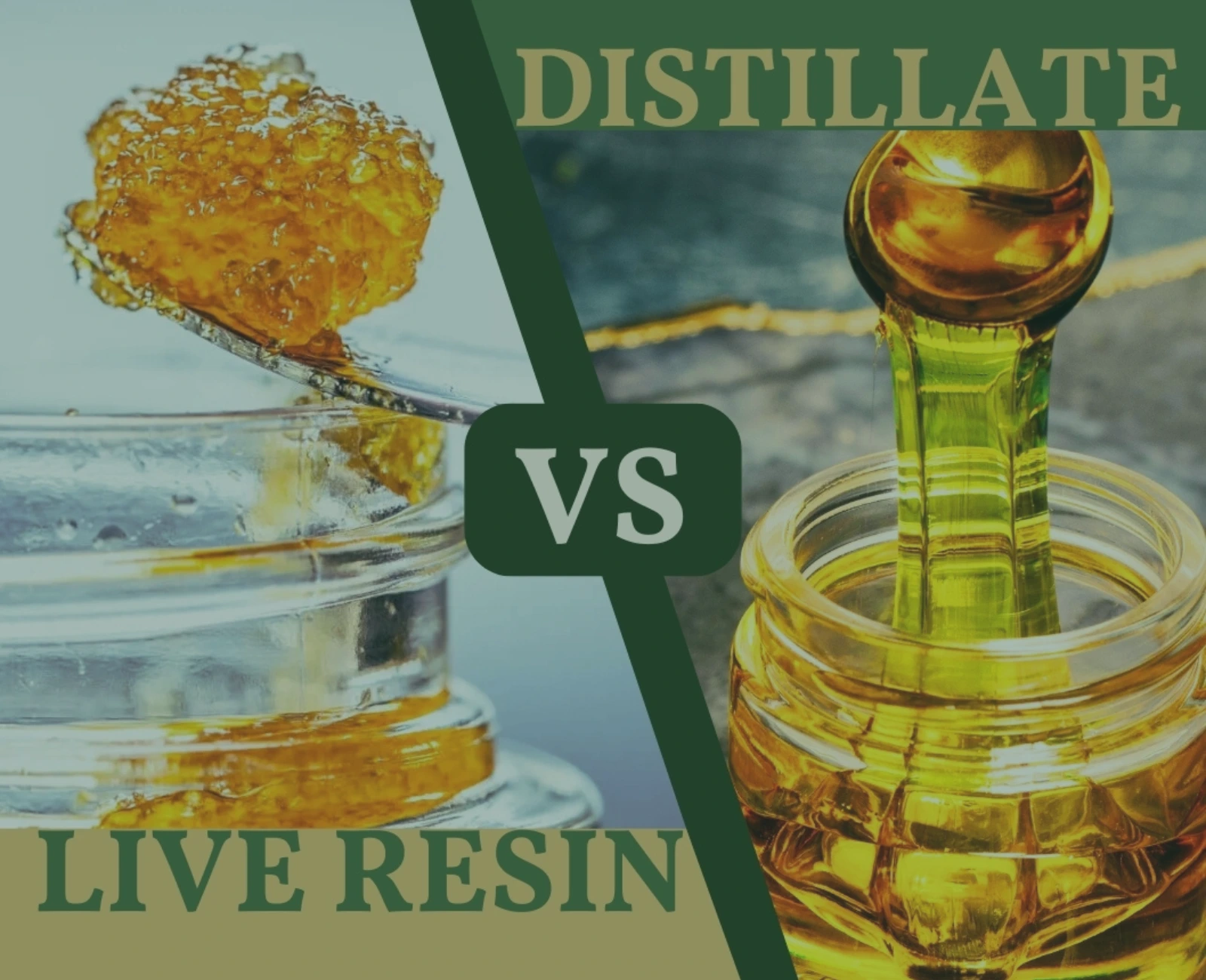Cannabis concentrates offer a wide range of experiences, with each type bringing its own flavor, potency, and characteristics. Among the most popular options today are live resin and distillate—two standout choices that deliver distinct experiences while offering comparable levels of intensity.
If you’re unsure which one is right for you, you’re not alone. Each has its own benefits depending on what you’re looking for in a vape. In this guide, we’ll break down the key differences in the live resin vs distillate conversation to help you make an informed choice.
Live Resin vs Distillate: How Are They Different?
What is Live Resin?
Live resin is a type of cannabis extract made from freshly harvested or flash-frozen cannabis plants, rather than dried and cured flower. This process helps preserve a rich profile of cannabinoids, terpenes, and flavonoids, resulting in a more aromatic and flavorful product.
To create live resin, solvents such as butane or CO₂ are used to extract the desired compounds from the frozen plant material. Because the plant is not dried before extraction, the resin glands remain intact—capturing the plant’s natural essence at its peak.

When comparing live resin vs distillate, one key difference is flavor and aroma. Live resin is known for delivering a more robust terpene profile, offering a complex and often floral scent and taste that reflects the original strain. Distillate, by contrast, is more refined and typically less flavorful, but it allows for precise cannabinoid dosing.

What is Distillate?
Distillate is a highly refined cannabis concentrate that typically contains one primary cannabinoid—most often THC or CBD—in a very high concentration. During the extraction process, all other compounds such as terpenes, flavonoids, and plant materials are removed, resulting in a nearly pure, odorless, and tasteless product.
The process begins with a crude cannabis extract, which is then heated using a technique called short-path distillation. Through controlled boiling points, cannabinoids are separated from the rest of the material and collected as vapor, which is then condensed back into liquid form. The result is a clean, potent oil that can be used on its own or combined with added terpenes for flavor.
Because of its purity and versatility, distillate is commonly used in vape pens, edibles, and topicals—especially when consistent dosing and a neutral taste are desired.
Potency, Flavor & Effects
The key factors to look at when understanding the difference between distillate and live resin is potency, flavor, and effect. These three things will help you decide what the right choice is for you.
When it comes to potency, distillate typically takes the lead, offering higher concentrations of a single cannabinoid like THC or CBD. For a more natural flavor, live resin is the clear winner, thanks to its preserved terpene profile that delivers a more authentic, strain-specific taste and aroma. However, distillates usually have a stronger artificial flavor. So it really depends on the product and what you’re looking for. As for effects, it depends on your goals—live resin offers a more well-rounded, full-spectrum experience, while distillate provides a cleaner, more controlled high. Choosing between them comes down to what matters most to you: intensity, flavor, or precision.
How Terpenes Influence the Experience
Cannabis lovers usually double-check if concentrates contain terpenes, since they bring so much to the table. Distillate THC vs live resin THC: Both can contain terpenes, but the content varies, so which should you choose? Here’s a breakdown of their pros and cons!
Live Resin: Full-Spectrum Choice
Live resin is a go-to option for cannabis enthusiasts who value both flavor and a more well-rounded experience. Often used in vape pens and dabbing, live resin delivers effects that are closer to how the original plant was intended to feel and taste.
Pros:
- Rich in Terpenes: Live resin preserves a high percentage of natural terpenes—typically between 4–12%—which can enhance the overall sensory experience and contribute to the "entourage effect" when paired with cannabinoids like THC or CBD.
- Strain-Authentic: Because it's made from fresh-frozen plants with minimal processing, live resin retains more of the plant’s original profile, resulting in a more natural, full-spectrum product.
- Flavor + Effect Combo: For those who appreciate a high-quality experience, live resin offers the ideal balance of moderate-to-high potency and robust flavor.
Cons:
- Lower THC Concentration: Compared to distillate, live resin typically contains less pure THC, as it includes other compounds that contribute to a full-spectrum effect.
- Higher Cost: The production process requires specialized equipment, storage, and careful handling to preserve terpenes, which can drive up the retail price.
Distillates: Pure & Powerful
Before live resin rose in popularity, distillate was the dominant choice across the cannabis market—and for good reason. Known for its purity, potency, and versatility, distillate remains a widely used ingredient in vape cartridges, edibles, tinctures, and more. Its long shelf life and consistent effects make it especially popular in budget-friendly and flavored cannabis products.
Pros:
- Exceptionally Potent: Distillates can contain over 90–95% THC or CBD, making them ideal for consumers seeking strong, concentrated effects.
- Highly Stable: With most plant compounds removed, distillates are less reactive to light, heat, and oxygen, giving them a longer shelf life and better product consistency.
- Flavorless and Odorless: Distillate’s neutral profile makes it perfect for infusing into edibles, tinctures, or flavored vape oils without affecting taste or smell.
Cons:
- Lacks Terpenes: In the distillation process, terpenes and other minor cannabinoids are typically stripped away, which can lead to a less nuanced experience.
- Less Complex Effects: Without the additional plant compounds, distillate often provides a single-note, cannabinoid-only high, which may feel more clinical or intense compared to full-spectrum options like live resin.consuming THC distillates.
Shop Live Resin and Distillate at Windy Hill
At Windy Hill, we aim to meet a wide range of preferences and lifestyles by offering a thoughtfully curated selection of THC concentrates, including terpene-rich live resin and high-potency distillates. Now that you understand the difference between distillate and live resin, we hope exploring our product lineup feels as smooth as the experience itself. If you’re looking for guidance on how to get the most out of these concentrates, our team is always here to help—just ask one of our in-store experts.
Frequently Asked Questions
What’s stronger, live resin or distillate?
Both live resin and distillate are potent cannabis concentrates, but they offer different experiences. Live resin typically contains 60–90% THC, while distillates can reach up to 95% THC or more. If you’re looking for a pure, isolated form of THC without the presence of other compounds, distillate is the better option. On the other hand, live resin retains natural terpenes and additional cannabinoids, delivering a full-spectrum experience with a more complex flavor profile. When it comes to strength in the live resin vs distillate comparison, it’s best to check the THC content and consider what kind of experience you’re looking for—pure potency or a richer, more layered effect.
Do live resin carts hit harder than distillate?
No. Since most distillates have a higher THC composition than live resin, THC distillates tends to be stronger. Live resin are slightly less potent, but they make up for the more flavorful and aromatic experience. Instead of strength, live resin stands out because of its full-spectrum of terpenes.











